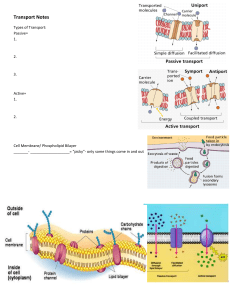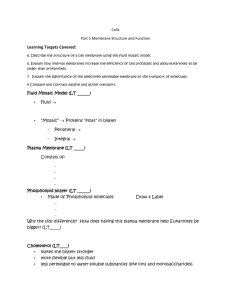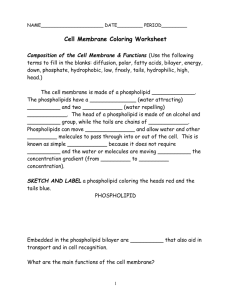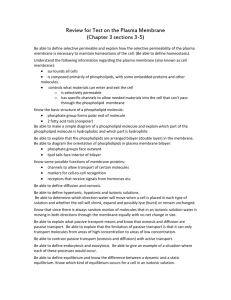Chapter 5 ppt - NWACC
advertisement
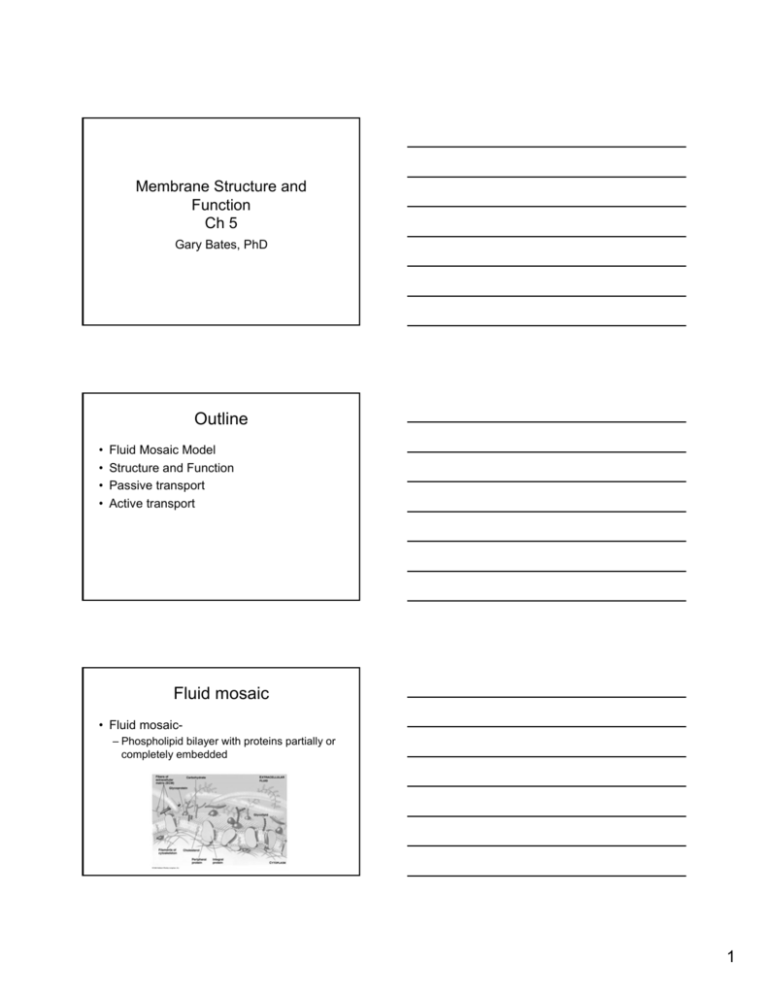
Membrane Structure and Function Ch 5 Gary Bates, PhD Outline • • • • Fluid Mosaic Model Structure and Function Passive transport Active transport Fluid mosaic • Fluid mosaic– Phospholipid bilayer with proteins partially or completely embedded 1 Structure • Phospholipid bilayer – Hydrophobic tails – Hydrophillic heads Proteins • Embedded-integral • Associated with the membrane-peripheral Protein functions • Channel – makes a pathway into cell • Carrier – actively carriers molecules • Cell Recognition – id substances • Receptor – binds with substance conformational change brings into cell • Enzymatic – Breaks down or joins together substances • Cellular joining – Allows cells to connect • Signal transduction – Starts signal pathway to lead to a response 2 Crossing Plasma Membrane Transport into and out of cell • Transport – active • requires ATP • Against gradient Lo -> Hi – passive • No ATP requirement • With gradient Hi-> Lo Passive transport • Diffusion is movement of molecules from Hi concentration to lo concentration until equilibrium is reached • Osmosis is diffusion of water across a semi-permeable membrane 3 Osmosis • Creates osmotic pressure • Greater osmotic pressure the greater chance that water will diffuse from that direction • Isotonic = in and out causes equilibrium • Hypotonic lower in than out causes swelling to lysis • Hypertonic Lower out than in causes shrinkage to plasmolysis Active transport Carrier proteins bind with certain molecules which causes a conformational change which brings the molecule into the cell. Molecule can follow the gradient (passive) facilitative or be moved against the gradient (active) Membrane Assisted Transport • Exocytosis- Vesicles fuse with plasma membrane as secretion occurs 4 Membrane Assisted Transport – Endocytosis - Cells take in substances by vesicle formation. • Phagocytosis - Large, solid material. • Pinocytosis - Liquid or small, solid particles. 5
